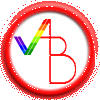You are here
Building Technological Frameworks for e-Research
This morning I'm spending time in a seminar by Ralph Schroeder from the Oxford Internet Institute, organised by the Centre for Creative Industries and Innovation. There's another seminar this afternoon, but this morning Ralph's talking about e-Research and the development of tools for distributed knowledge production.
He begins by noting the significant interest and investment in e-research - the shared use of digital distributed tools, data, and resources for research; these change the research landscape by globalising knowledge, reconfiguring disciplines, and (perhaps) ultimately advancing science. Knowledge, however, is traditionally understood as being always local, and tends to be siloed in specific disciplines - e-research breaks with such assumptions, and allows scientists to conduct interdisciplinary work which shifts boundaries. Science, at any rate, is drifting gradually towards more team-based research approaches, and the amount of scientific data and information is increasing rapidly.
There are a number of competing definitions and terms around e-research, however - e-science, e-infrastructure, cyberinfrastructure, etc., which focus on various levels of the scientific process (from research processes to the underlying models and infrastructures). We understand scientific innovation today as a process of converting ideas into technology and finally into consumer products; this is not necessarily right, however, as technologies also drive science (especially since the start of the industrial revolution). e-Research is about research technologies, for that reason.
So, in e-Research, networked collaborative tools combine with digital data and other research materials through research technology to produce research outputs. This can take place at all levels from macro to meso to micro, and connects these levels through the aggregation of individual knowledge at the macro level, or the reembedding of macro knowledge in local contexts at the micro level.
Ralph now runs through some examples for this, such as the EGEE project (Enabling Grids for e-Science) at the CERN particle physics centre which is enabled by a well-established network of collaborative agreements between the individual project partners. These agreements are crucial in physics, and similar structures of collaboration need to be developed for other disciplines conducting e-research projects and collaborations - so in addition to collaboraton technology in its own right, there is a need for a common middleware and a common organisational model to facilitate e-research.
Another example is the Australian-based VOSON: the Virtual Observatory for the Study of Online Networks, which tracks Web presence over time. The project uses open source and open standards and conducts hyperlink analysis (or Webometrics); it applies to all online networks and is therefore focussed on a global research object (this is similar to the IssueCrawler tool). Ralph has used this tool to map the growing network of e-science and e-social science sites in the U.K., for example - using an e-research tool to research e-research... That investigation points to the fact that in the U.K., interconnectedness remains a factor of organisational relations rather than of the availability of e-research tools.
Finally, Ralph also notes the International Virtual Observatory Alliance - a grouping of astronomers with access to major telescopes which has begun to develop protocols for dealing with the 'data deluge' produced by their work, and are building a federated database to facilitate this global collaboration. Ultimately, this would also involve amateur astronomers as contributors and users of the data; beyond questions of technology, the main challenge for the project at presence is about curating this wealth of data.
Overall, in fact, sharing data is one of the major obstacles in developing e-research approaches. There have been projects in this field especially in Sweden, which serves as a kind of testing ground for these approaches; this is also because there is a system of personal identification numbers which are unique for every individual Swede. This fact has been used to develop sophisticated databases of information about the population, tracking for example the annual progress of influenza epidemics. Switzerland has seen similar projects, working across the academic/commercial divide but struggling with state/federal relationships.
Finally, on a very different level, Ralph highlights the Thomas Pynchon Wiki, a user-led initiative to unravel the wealth of themes and allusions in Pynchon's novels. This virtually induced contributors to become textual detectives, encouraging amateur contributions - a question here is how (or if) a project like this can ever be finalised, or must necessarily remain open and unfinished. (Ralph and Mathijs den Besten also presented a paper on this at AoIR 2007.)
Any such projects need to be tracked to identify how they affect the quality of research, and indeed the nature of research. There are obvious questions of privacy and confidentiality, and other questions of protocols and legal and commercial frameworks; Ralph describes e-research tools as an exoskeleton for scientific research which therefore also forces new practices onto researchers. We need to better understand such effects, and in turn further develop these tools to maximise their scientific benefits.
- Snurb's blog
- Add new comment
- 7837 reads
 Printer-friendly version
Printer-friendly version

![Creative Commons Attribution-NonCommercial-ShareAlike 2.0 License [Creative Commons Attribution-NonCommercial-ShareAlike 2.0 License]](http://creativecommons.org/images/public/somerights20.gif)





Comments
hmmm
shouldn't that say.. at the aoir conference in 2007, because the conference was internet research 8.0
Re: hmmm
Heh. Fair enough - the numbering always confuses me, because 07 = 8.0...